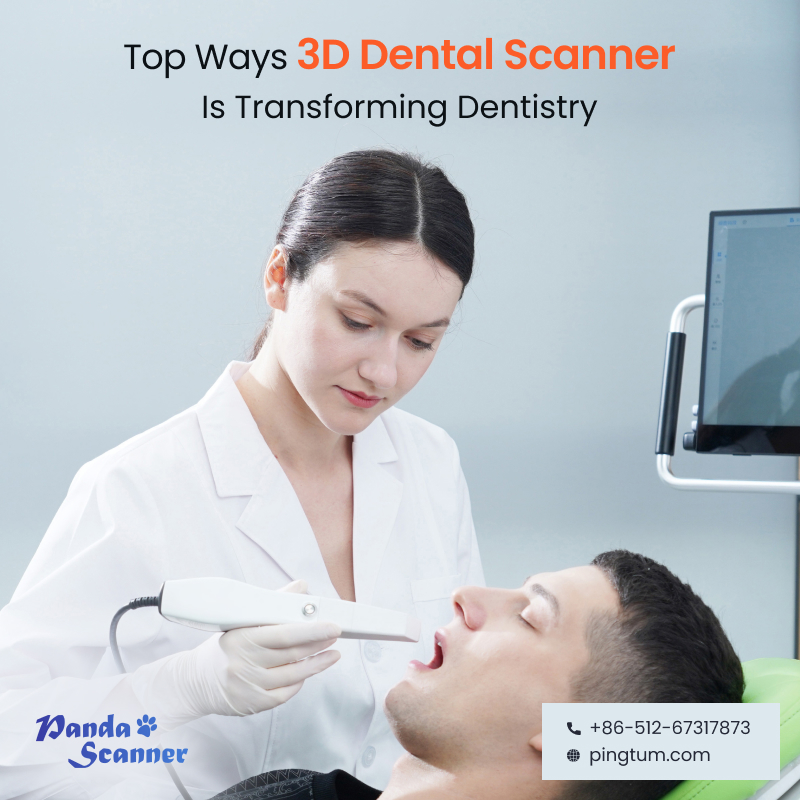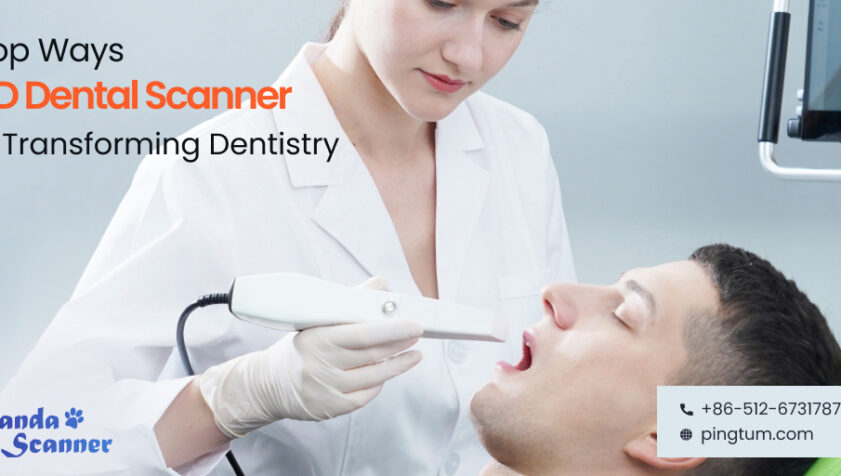Thanks to technological breakthroughs, the area of dentistry has seen a significant revolution recently. The 3D dental scanner is one such ground-breaking invention that has completely changed how dentists diagnose, plan treatments, and make dental restorations. These scanners have caused a paradigm change in the industry by producing precise and in-depth digital images of the oral cavity. So without further ado, let’s find out how 3D dental scanners are revolutionising dentistry and helping patients as well as dental professionals.

Accuracy
Dental practises have traditionally relied on conventional dental impressions. However, they frequently present issues with regard to turnaround time, patient comfort, and accuracy. There is no longer a need for dirty imprint materials thanks to 3D dental scanners. Instead, these scanners provide unmatched precision by taking exact digital photographs of the patient’s teeth and gums. Better treatment planning is made possible by the increased accuracy, ensuring that patients receive the best possible care.
Improved Comfort for the Patient
The enhanced patient experience offered by 3D dental scanners is one of their key benefits. Traditional impressions may make some individuals feel uneasy or even trigger gag reflexes. However, 3D scanners are non-invasive and greatly lessen patient pain. Patients can unwind while their digital impressions are being recorded thanks to the rapid and easy scanning procedure. Real-time picture visualisation also improves patient education and engagement, fostering improved comprehension and well-informed decision-making.
Better Diagnostic Capabilities
Planning dental treatment effectively depends on an accurate diagnosis. Dentists have access to a variety of diagnostic data thanks to 3D dental scanners. These scanners take precise pictures of the teeth, gums, bone structure, and surrounding tissues, exposing hidden problems that could be difficult to find with conventional techniques. Dentists may examine the digital models, calculate angles and distances, evaluate occlusion, and spot possible issues early. More accurate and individualised treatment strategies are made possible by this complete diagnostic capacity.
Efficient Work Management
The use of 3D dental scanners accelerates the whole dental workflow, which is advantageous to patients and dental professionals alike. Since the digital impressions are instantaneously accessible, there is no need to fabricate and send physical models. In order to save time and lower the possibility of mistakes or misunderstandings, dentists can digitally exchange the models with dental laboratories and experts. The ease of storing and retrieving digital data also eliminates the requirement for physical storage space and reduces the possibility of loss or damage.
Improved Treatment Planning
With the use of a 3D dental scanner, dentists can precisely arrange treatments. Dental professionals can simulate different treatment choices and their results using the detailed manipulation and analysis capabilities of the digital models. This supports a collaborative approach to therapy by assisting in the evaluation of various circumstances, choosing the best treatment plan, and communicating it with patients. Patients are able to see the suggested outcomes, which helps them make wise choices and set reasonable expectations.
Customised Dental Restorations
The method of making dental restorations has changed as a result of the incorporation of 3D dental scanners with CAD/CAM systems. Dentists may create very precise and personalised crowns, bridges, and other prosthetic restorations using the digital impressions. The efficient manufacture of restorations with exact fit and aesthetics is made possible by the direct transmission of digital data to dental laboratories or in-house milling equipment. This shortens the turnaround time for patients and, in certain situations, allows for same-day restorations.
Final Thoughts
Unquestionably, the development of 3D dental scanners has changed the dental scene. These scanners have completely changed how dentists approach treatment planning and dental restorations, from increased accuracy and improved patient experiences to sophisticated diagnostics and effective workflows. Better results, shorter chair visits, and more patient satisfaction have been the benefits of integrating digital technologies with conventional dentistry practises. We may anticipate further improvements and fascinating breakthroughs in the field of 3D dental scanners as technology develops, further advancing dentistry into a new era of precision and patient-centred treatment.






